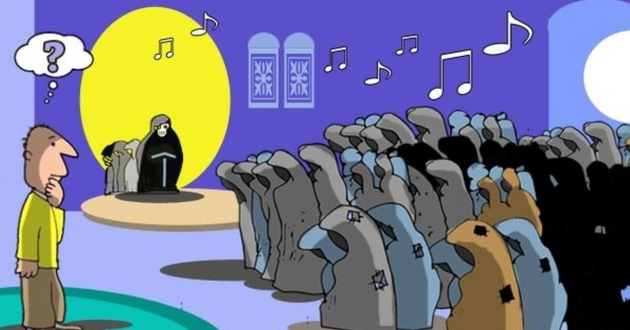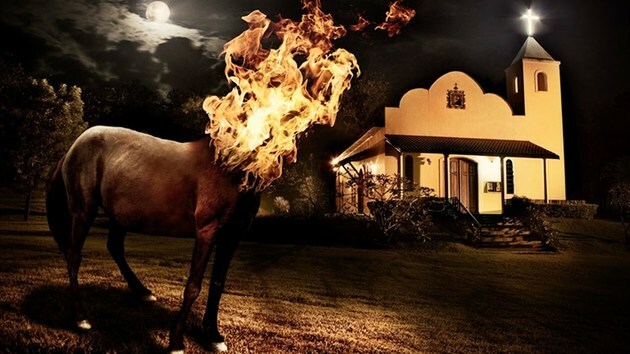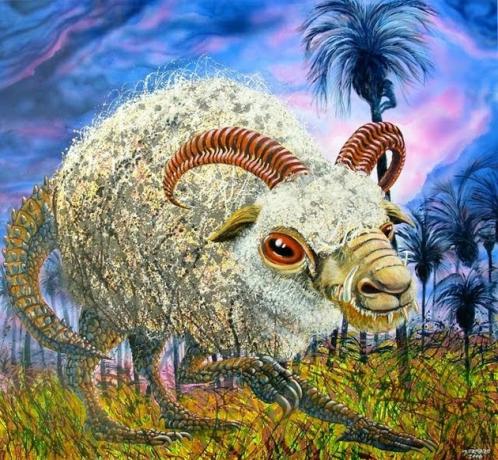As a very mixed country, Brazil has a wide diversity that is reflected not only in the physical characteristics of its people, but also in its culture and beliefs.
The southeast region, for example, has legends where there is influence of African culture and indigenous culture. Furthermore, it is also possible to note that many of the legends have a religious nature.
Check the selection that the All Matter prepared with the main legends of the southeast region of our Brazil.
1. Legend of the Mass of the Dead

The legend of the Mass of the Dead originated in the early twentieth century, around 1900, in the city of Ouro Preto, in Minas Gerais.
On site, there was a church called Church of Our Lady of Merces de Cima, who was lovingly cared for by a caretaker named João Leite.
It is said that John was once awakened in the middle of the night by noises coming from the church. The caretaker went to the place fearing it was a robbery. When he arrived there, instead of encountering robbers, João Leite was faced with a mass being celebrated.
When the priest raised his face to say the Dominus Vobiscum (The Lord be with you), John noticed that his face was actually a skull.
Upon closer inspection of the faithful, he saw that they too, who were dressed in a kind of hooded cape and had their heads bowed slightly down, were clothed skeletons.
Frightened, he ran to a door that opened onto a cemetery. John was even more surprised to see that this door, which was always locked, was fully open tonight.
2. Legend of Chibamba

The legend of Chibamba consists of a ghost that haunts children, participating in their nightmares. It is a legend from Africa that arrived in Brazil through the natives.
Africans used to decorate the body with banana leaves in some of their rituals (fishing, hunting, harvesting, etc.). Children were sometimes shown as creatures who would come and torment them whenever they did not want to sleep.
considered a bogeyman variation, Chibamba is also known as the “spirit of the banana trees”, as the Africans used to do in some of their rituals, the Chibamba is dressed in the leaves of the plant.
The creature is known to snore like a pig, dance wildly and twirl as it walks.
This legend was used by adults as a way to educate children to go to bed at the correct time, as they ended up being afraid that Chibamba would come to haunt their dreams.
3. Legend of the Headless Mule

The legend of the headless mule is the story of a woman who was cursed by God as punishment for her sins.
There are many variations on what exactly these sins might be, but the theory that has gained more traction over the years is that the woman would have had a romantic relationship with a priest.
The curse turned the woman into a mule that has an iron bridle and, in place of a head, has flames of fire.
The headless mule is used to running through the fields neighing loudly and scaring people who get in his way. Sometimes she seems to sob like a human being.
It is said that the spell will only end if someone has the courage to pull such an iron bridle or to wound her so that she loses a little blood.
The legend of the headless mule is a kind of religious morality lesson to show that women cannot get involved with the religious or receive a punishment.
4. bogeyman legend

The bogeyman is one of the best known folklore characters not only in Brazil, but also in the world.
According to legend, he often frightens ill-bred, disobedient, and lying children.
The bogeyman is said to be a kind of monster that hides under the bed, inside closets and behind the bedroom doors of children who misbehave to frighten or devour them during the night. Hence the origin of the name “bogeyman”; from the verb “papar”, which means “to eat”.
There is also a version of the legend that states that the character watches the children from the roof of their house and takes action whenever he sees bad behavior.
The story of the bogeyman is often told to children with an educational purpose. Although it incites some fear, the intention is to show the child that he/she needs to be educated and have respect for everything that is asked of him/her.
5. Legend of the Invisible Horse

During Lent, the period before Easter, the faithful prepare to celebrate the Resurrection of Jesus Christ.
However, many people do not believe in or do not care about this tradition.
It is said that the invisible horse is a kind of message from God to unbelievers, as a way of imposing respect on the suffering of their child.
The horse usually gallops by at night, near the bedroom window where the person who does not believe in the traditions of Lent sleeps (such as not eating meat and practicing charity, etc.).
Upon hearing the galloping horse, many have tried to look out the window, or even quickly leave the house, in order to see the animal. However, no one was successful.
They say the reason no one can see him is because he's invisible.
6. legend of Curupira

Curupira is a young man with slightly long red hair, who usually appears mounted on a wild pig to defend the forest and the animals of the forest where he lives. Some say that he is actually an Indian.
In addition to the reddish hair, one of Curupira's main features is its backward-facing feet.
The character tends to deceive and confuse people who try to harm the forest and animals. When they try to find him, the backwards footprints end up making people look for him in a different direction than where he actually is.
In order to keep away all those who want to damage nature, Curupira usually whistles and howls like a wolf in a frightening way.
It is said that the animals of the forest usually ask Curupira for help through a whistle. He promptly appears and if need be, he even attacks.
It is even believed that the character is responsible for the disappearance of those who destroy the environment and the sudden forgetfulness of forest trails and paths by woodcutters and hunters.
7. Werewolf legend

Also known as lycanthrope, the Werewolf is a folklore character who during the day resembles a common man and during the nights of a full moon he transforms into a kind of wolf.
One of the versions of the origin of the legend states that as punishment from God, a man was bitten by a wolf and began to transform into a similar being on the nights of a full moon.
People often identify the Werewolf when he is in human form because of his big dark circles, tired appearance and strange behavior: the man who becomes a Werewolf tends to distrust everything and everyone and is always very attentive to others people.
In wolf form, the creature has a habit of wandering through the night in search of blood to feed on.
It is said that silver and fire are the only two ways to annihilate the Werewolf.
8. legend of love

The legend of Amorosa is an original legend of Rio de Janeiro, more specifically by Conceição de Macabu, which tells the story of two Indians, Ipojucam and Jandira.
The two Indians fell in love, became engaged and on the eve of the wedding, Ipojucam offered a big hunt to Tupan, an indigenous deity, for the ceremony to be blessed.
Anaga, god of death who envied the Indian's hunting skills, appeared to him in the form of a jaguar and challenged him to a fight.
The jaguar was fatally injured. Displeased, Anhagá resurrected the animal, which was chased by Ipojucam until they reached a waterfall where Jandira was.
In the form of a jaguar and with the intention of hitting Ipojucam, Anhagá decided to attack India, but ended up defeated once more.
Anhagá's feeling of humiliation made him turn into a waterspout and drag Jandira and Ipojucam to the bottom of the waterfall, which was renamed Amorosa Waterfall.
folklore quiz
Don't stop here! O All Matter selected a series of rich texts on folklore to help you broaden your knowledge.
- Legends of the North Region that you need to know
- Unmissable Legends of the South Region
- Northeast Region Legends You'll Love
- Fantastic Legends of the Midwest Region
- Awesome Indian Legends
- Amazing African Legends
- Myths and legends from Brazil and the world



